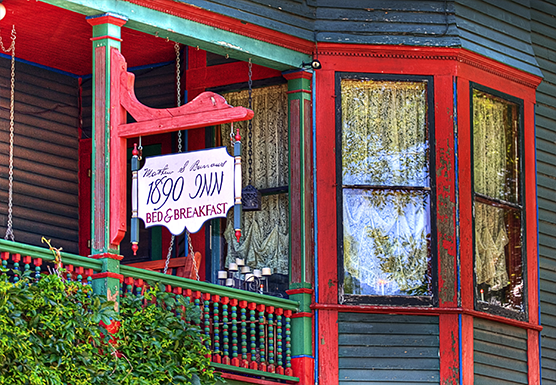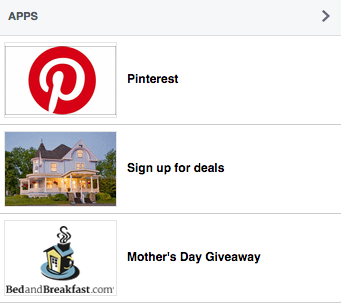Email is one of my favourite methods of marketing. Like blogging, it allows me to talk to our followers on a more personal level and keep them up-to-date with our news.
I also have more confidence that my messages are actually being read. Nine in ten (91%) of us check our email every day (or if you’re anything like me you check it multiple times a day), and that number is not going to be diminishing any time soon.
For a bed and breakfast with a relatively small marketing budget, email is everything.
However, because all of us receive so many email newsletters these days, people are more discerning about the lists they subscribe to. If a newsletter isn’t providing them with any significant value, they’re going to unsubscribe without thinking twice about it.

Let this article be your ultimate guide to email marketing as a B&B. It includes advice about what to include in your newsletter, how often you should be sending it out, what platforms you could be using and how to get more people to sign up.
What to include in your B&B newsletter
To make life easier for you when you’re sending a newsletter out on a regular basis, draft up a general template that you can use again and again. For example your subheadings could be:
B&B news
Include a personal message about what has happened at your B&B since your last email. You could talk about a positive guest experience or a funny mishap in the kitchen – anything that humanises your business and shows off your personality.
This could include:
- The latest room specials and packages
- New items on the menu
- Guest feedback
- Awards you've won
- Recent charity events you've taken part in (show your philanthropic side)
- A change in the season (talk about how you're setting into winter, for example)
Local events
Highlight exciting events happening in your local area so your subscribers can’t resist booking a visit. If it’s a quiet time, you could share some background about your town to give them a flattering picture of the area.
This could include:
- What's happening at other tourist attractions
- Food and wine shows
- Music festivals and concerts
- Art exhibitions
- Funny or interesting local history
Suggested itineraries
Remind your subscribers what kind of experience they can enjoy at your B&B. Outline an activity they could do when they arrive. If you live in a popular tourist destination, let them know about an unconventional tourist spot.
This could include:
- A daily itinerary
- A spotlight on a single unmissable activity, like a visit to the best local bakery – ask the proprietor to make a comment (for example they could recommend their favourite muffin) to give it a real insiders feel
- A short guest review of a fun local activity
- Interesting facts about the local wildlife guests might see when they visit
One important thing to note: Reduce the number of images you include in your newsletter. Spam filters can’t read images, so they regard them with suspicion. Too many can send your newsletter straight into the junk folder. Don’t use more than 25% of the space in your email template for photos.
How often you should be sending your email newsletter
If your newsletters are going out too frequently, people are going to unsubscribe. If there’s too much time between one email and the next, people are going to forget who you are and unsubscribe. At a minimum, you should send your newsletter once a month in order to maintain a positive reputation with email inbox providers.
As a general rule:
- Monday is the worst day for sending emails.
- Tuesdays and Thursdays are the best days for sending emails.
- 1-3pm is the most reliable time.
That said, this information varies from business to business. You will only really find out the best days and times to send your email by testing it (more about this below).
Email platforms to use
There are several email tools you can use to help streamline the email process. Most of them are free until you reach a certain number of subscribers. They have inbuilt templates you can customise with your logo and colours, and analytics tools that you can use to track things like open rates, unsubscribe rates and click through rates.
- MailChimp – MailChimp allows you to sign up for free if you have fewer than 2,000 subscribers, and you can send up to 12,000 emails a month (not that you would!) Free users have access to features such as templates, tracking statistics and sign-up forms (which can be integrated with your website or Facebook page). If you have more than 2,000 subscribers, pricing starts from $40 per month.
- Constant Contact - You can try Constant Contact free for 60 days. After that, pricing starts at $20 a month for 500 subscribers. The features are mostly the same, except Constant Contact has a wider variety of templates.
- Aweber - Again Aweber offers many of the same features as the other two platforms, but it also offers more sophisticated analytics tools, higher deliverability rates and more templates (over 700). You can try Aweber with a free 30-day trial. After this, membership costs $19 per month for 500 subscribers.
How to get more subscribers
Make sure you include a ‘Subscribe to our newsletter’ button on your website so every visitor has the opportunity to sign up to your newsletter.
The sign-up form used by Milton Bed and Breakfast
I would also suggest including a sign-up form on your Facebook page, which you can create using any of the three above email tools (here are instructions on how to do this through MailChimp, for example).

Include a link in your email signature so contacts have the opportunity to sign up every time you correspond (mention that they will have access to exclusive deals if they do). And include a paper sign-up form at your front desk so guests can opt-in as they check-out.
Now I would love to hear about what methods of email marketing are working for you! Do you send out a regular newsletter?